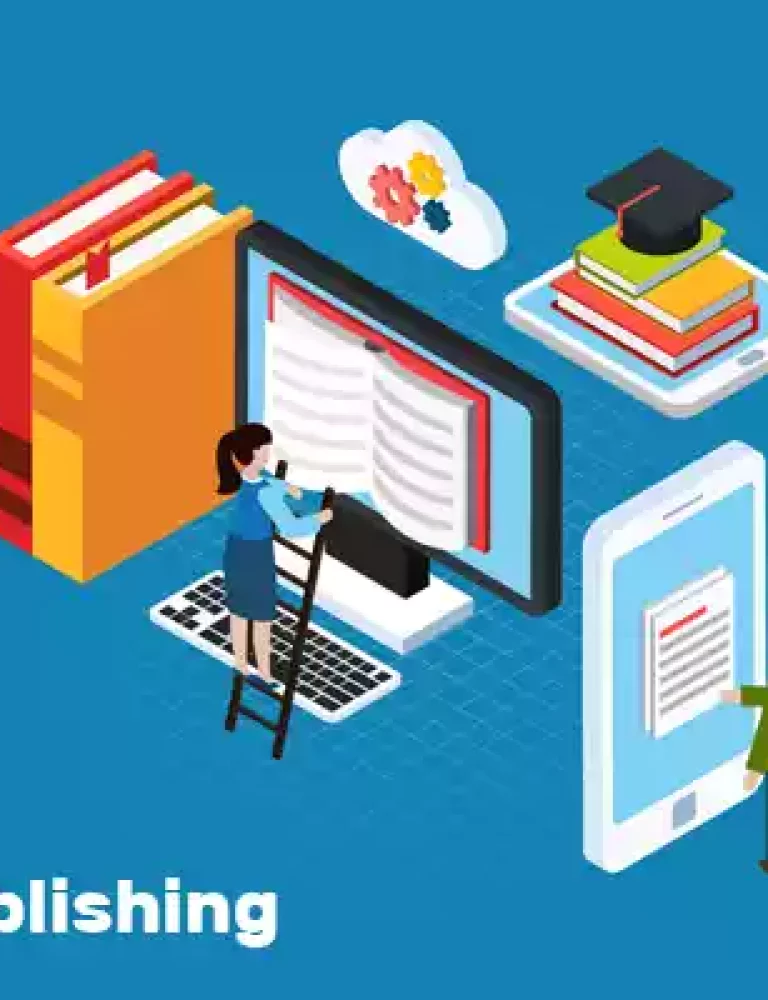The wave of digital transformation is reshaping the educational landscape globally. The swift progression of technological advancements, combined with the significant repercussions of the COVID-19 pandemic, have expedited this transformation.
Schools worldwide are increasingly recognizing the limitations of traditional rote learning methods and are acknowledging the multifaceted benefits of digital learning solutions.
Yet, choosing the right digital curriculum solution can be challenging, especially since it’s a big investment. It’s not merely about jumping on the tech trend; it’s about making a significant investment in the future of education at your institution. In this regard, digital textbook platforms like KITABOO have emerged as top choices in the industry. They offer a variety of features and customization options to cater to the unique needs of each school.
Read on to explore various factors and steps you need to follow to ensure that you select the best digital curriculum solution for your school.
Table of Contents
I. 5 Steps to Follow When Choosing a Digital Curriculum Solution
- Understand Your Objective in Adopting Digital Curriculum Solutions
- Define the Teacher’s Strategic Role in Learning
- Check for Hardware and Software Compatibility
- Examine How the Software Monitors Progress and Proficiency
- Ensure a Test Drive before Purchase
II. Conclusion
5 Steps to Follow When Choosing a Digital Curriculum Solution
Follow the five steps mentioned below to make an informed decision about the digital curriculum solution for your school:
1. Understand Your Objective in Adopting Digital Curriculum Solutions
First and foremost, grasp what you hope to accomplish with digital curriculum solutions. Make sure your focus remains on the students and their learning. By doing so, you’ll find your choices becoming clearer and more aligned with your goals.
Research shows that a student-centric approach to learning ensures better results overall and helps shape curriculum development. If you’re keen on adopting such an approach for your school, make sure you assess the various solutions available to you and evaluate which of them offers the most value.
Traditional rote learning methods often fall short in accommodating the diverse learning paces and styles of students, lacking a personalized touch. If addressing these limitations is a priority for your transition to digital learning solutions, it’s essential to incorporate this perspective into your decision-making process.
2. Define the Teacher’s Strategic Role in Learning
No matter how advanced technology becomes, the teacher’s role in education remains irreplaceable. While technology aims to tailor learning experiences for individual students, it’s the teacher who acts as the vital connector between students and the curriculum.
By being more proactive, teachers elevate student engagement. In fact, 92% of teachers say that student engagement is key to academic success. This highlights the importance of fostering an environment where students are not only actively involved but also interactively engaged in their learning journey.
With wide access to online tools and platforms like YouTube, there’s no dearth of “instructors” online. This is why it’s essential that teachers adopt the role of a “facilitator,” thereby playing a more active role in the learning process. This shift promotes a symbiotic learning environment where teachers and students continuously enrich each other.
3. Check for Hardware and Software Compatibility
Before investing in digital learning solutions, ensuring that your school’s IT infrastructure can handle the demands of such a system is crucial. A key aspect of this is ensuring an uninterrupted supply of high-speed internet, which is crucial to ensure a seamless learning process.
Additionally, schools must also ensure that their hardware and software are compatible to ensure the seamless operation of digital curriculum software. The ease of transition to the use of a comprehensive digital learning solution is key.
Also, you must also consider how flexible and compatible the software is with different plug-ins, add-ons, and varying file formats. Make sure you opt for solutions that offer flexibility and ease of integration.
Platforms like KITABOO, for instance, are known for their extensive compatibility and user-friendliness. It not only streamlines the adoption process but also enhances the overall user experience for both educators and students.
3. Examine How the Software Monitors Progress and Proficiency
The right digital curriculum solution must offer a means of ensuring continuous monitoring and assessment of student performance while providing actionable data for the future.
Some of the best software offers the ability to perform real-time monitoring while adapting to students’ answers and unique mistakes. This helps cater to different approaches to learning and problem-solving, which is to be expected with a diverse group of students.
Continuous, integrated assessment mechanisms ensure that student progress is mapped consistently, allowing educators to discern distinct patterns, strengths, and areas for improvement. This data is also crucial to understanding the degree of success the platform has to offer, thereby creating room for continuous improvements.
These assessments also help in the overall curriculum development stage, as they help provide a bird’s-eye view of the student performance and their areas of improvement, along with how the curriculum can be shaped to ensure this.
5. Ensure a Test Drive before Purchase
Lastly, never shy away from demanding a trial before committing to a solution. Given the significant investment digital curriculum solutions represent, you deserve firsthand experience to determine its fit.
Also, make sure you check the software’s ease of use, integration capabilities, and alignment with your school’s specific objectives during the trial period.
Make sure you opt for platforms that are confident enough in their offerings to provide demo versions or trial periods. KITABOO, for example, offers you a free demo of its services, emphasizing its commitment to user satisfaction and its belief in the platform’s value.
Conclusion
Choosing the right digital learning or curriculum solutions can make or break the learning experience for both students and teachers alike. As a result, purchasing such a solution requires careful consideration, research, and hands-on evaluation.
In this regard, note that digital textbook platforms like KITABOO produce dynamic and captivating digital content, including eBooks, safeguarded with robust DRM measures and encryption.
Connect with our experts for further details!
Write to us at KITABOO@hurix.com to learn more about how we can assist you in enhancing your educational ecosystem.
Suggested Reads:
Discover How An Ebook Conversion, Publishing & Distribution Platform Can Help You
Kitaboo is a cloud-based content platform to create-publish & securely distribute interactive mobile-ready ebooks.
You May Also Like
-
Create Captivating Interactive Books: A How-To Guide
Blog,Digital Publishing,eBook solution / February 29, 2024
-
Online Book Publishing: A New Era For Authors Unleashed!
Blog,Digital Publishing,eBook solution / February 29, 2024









